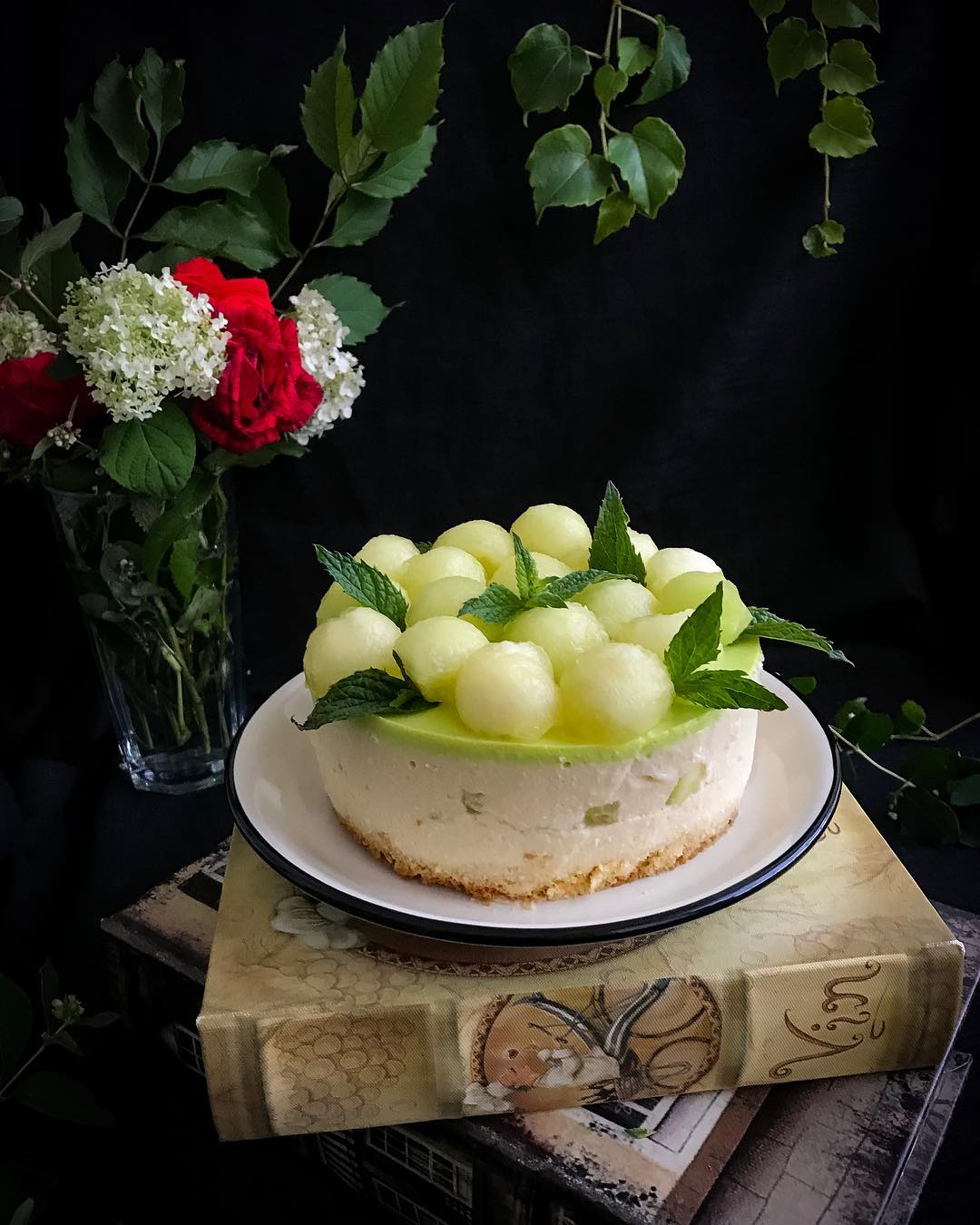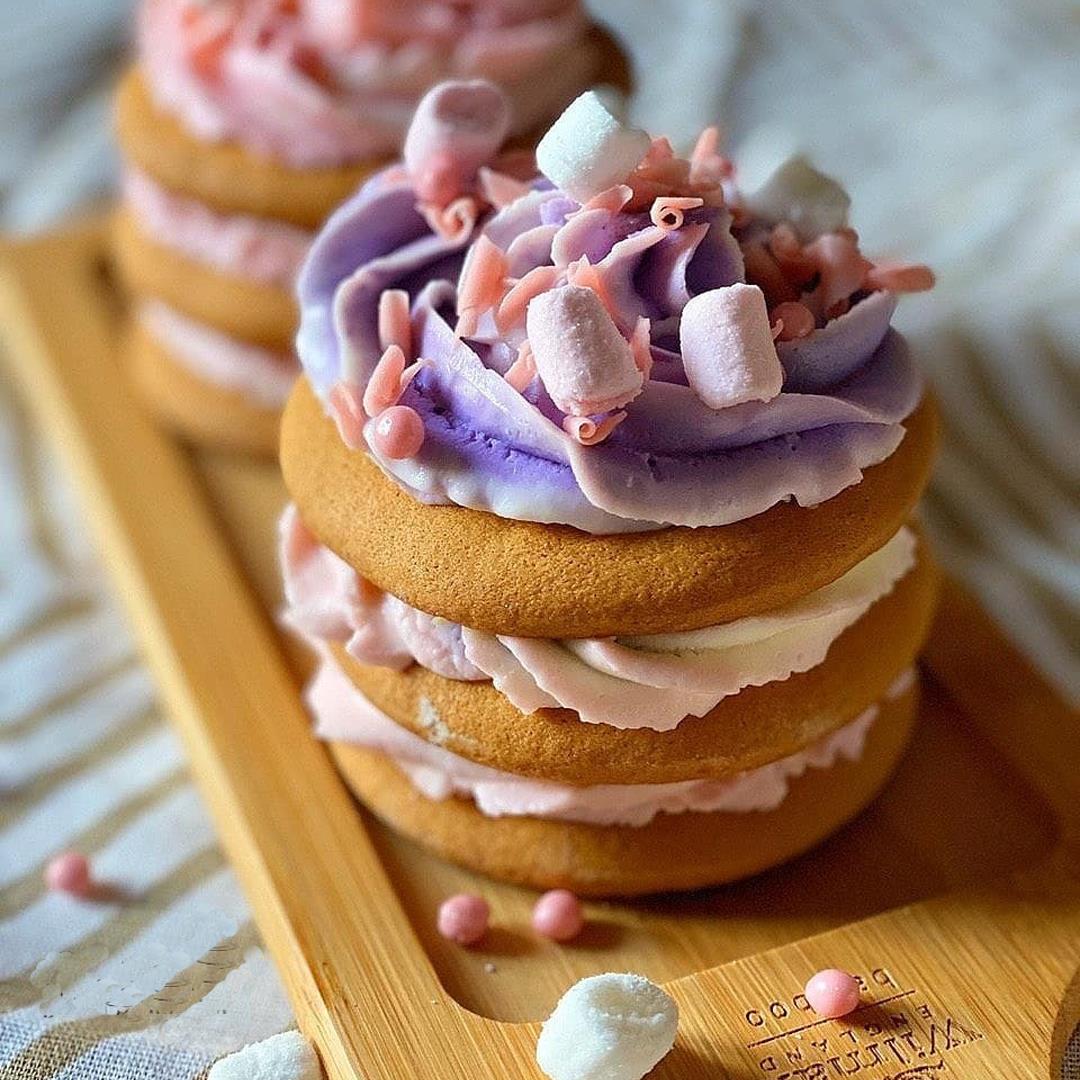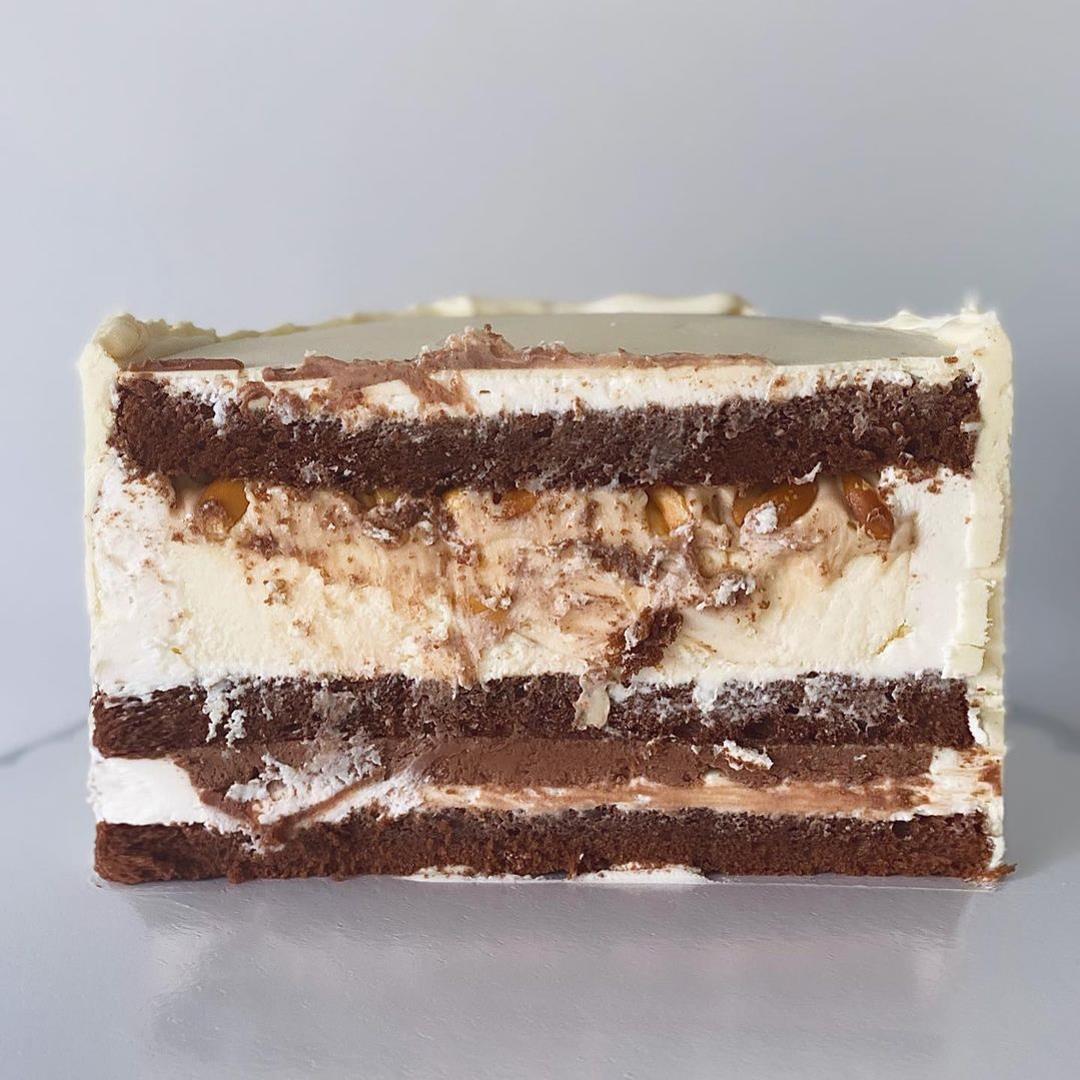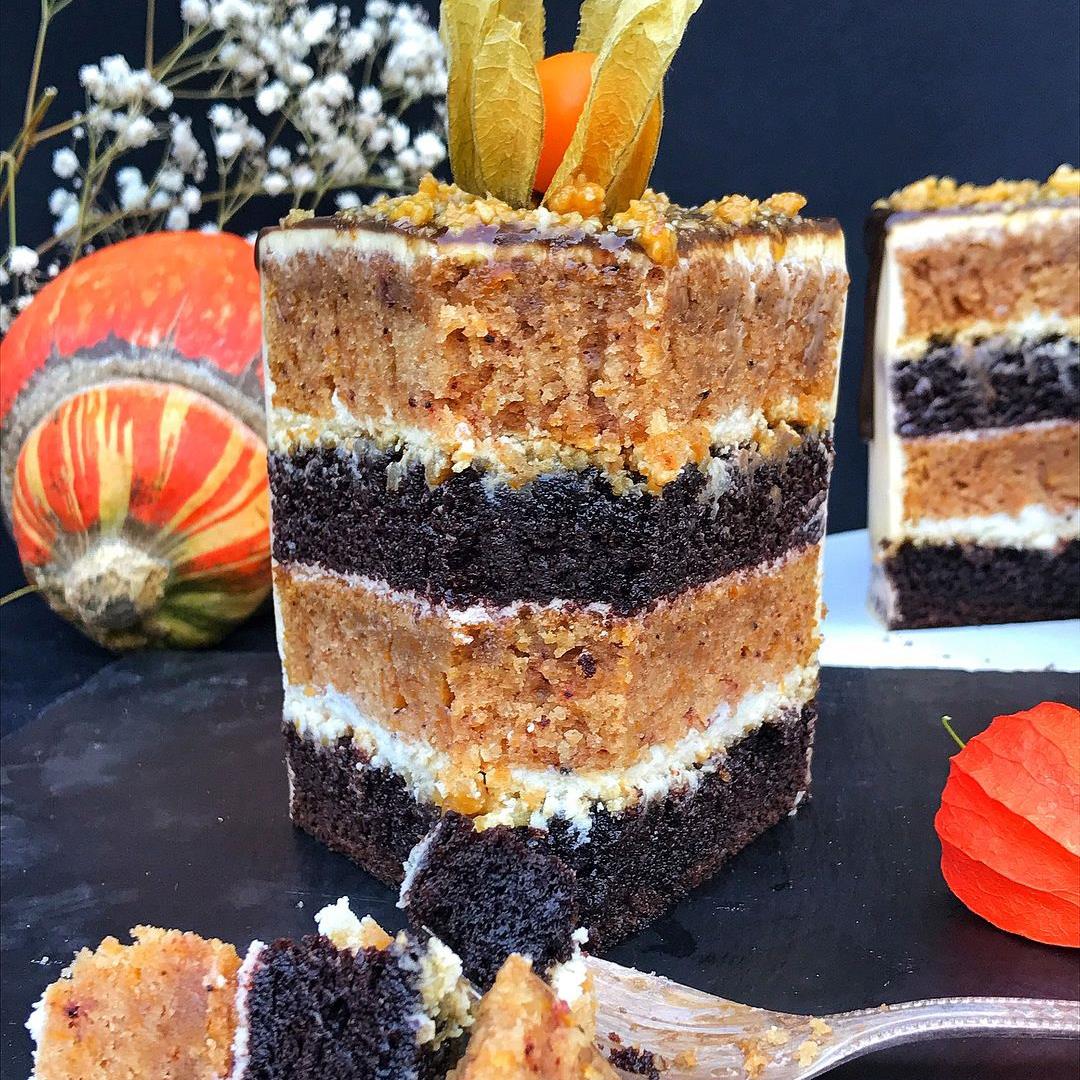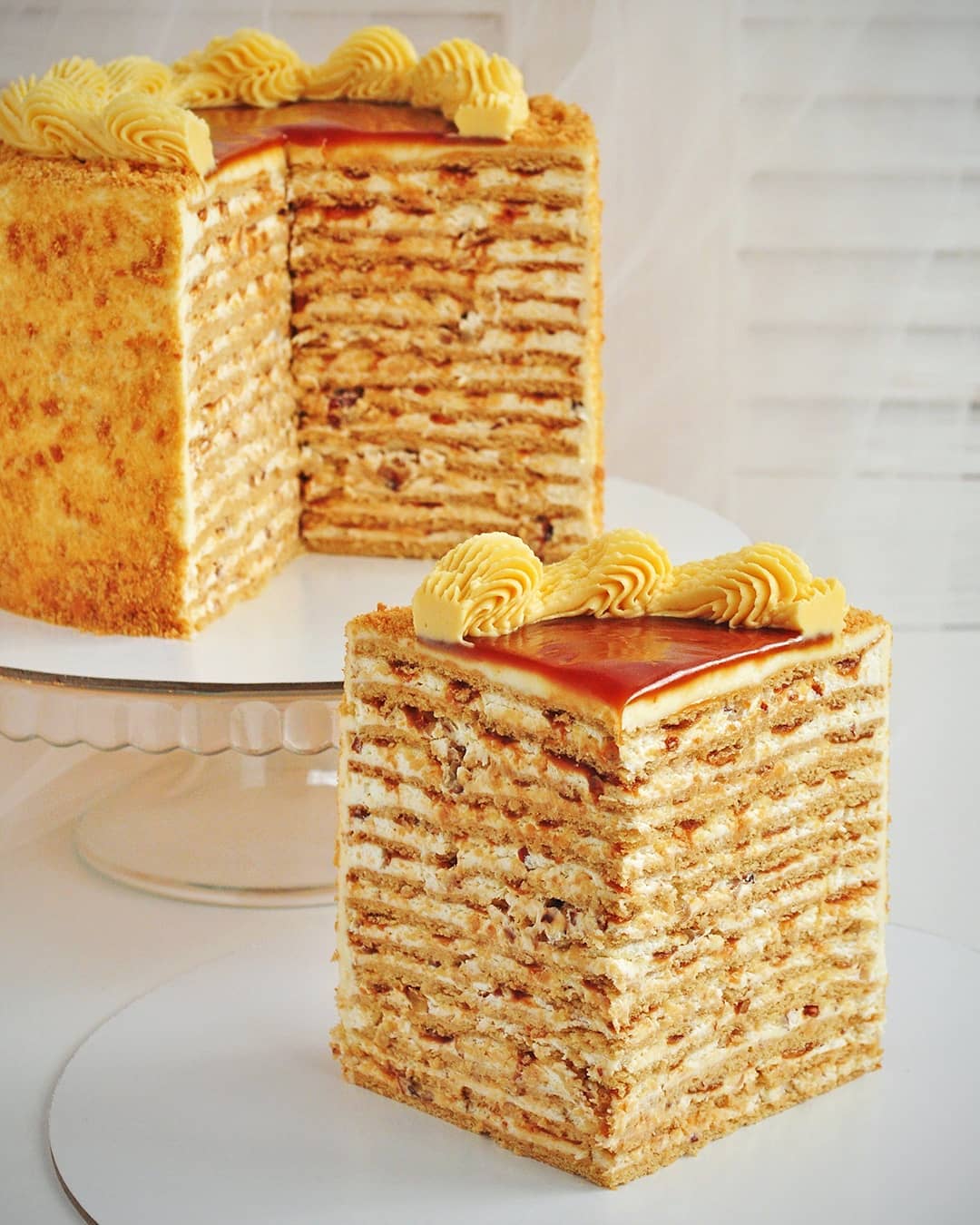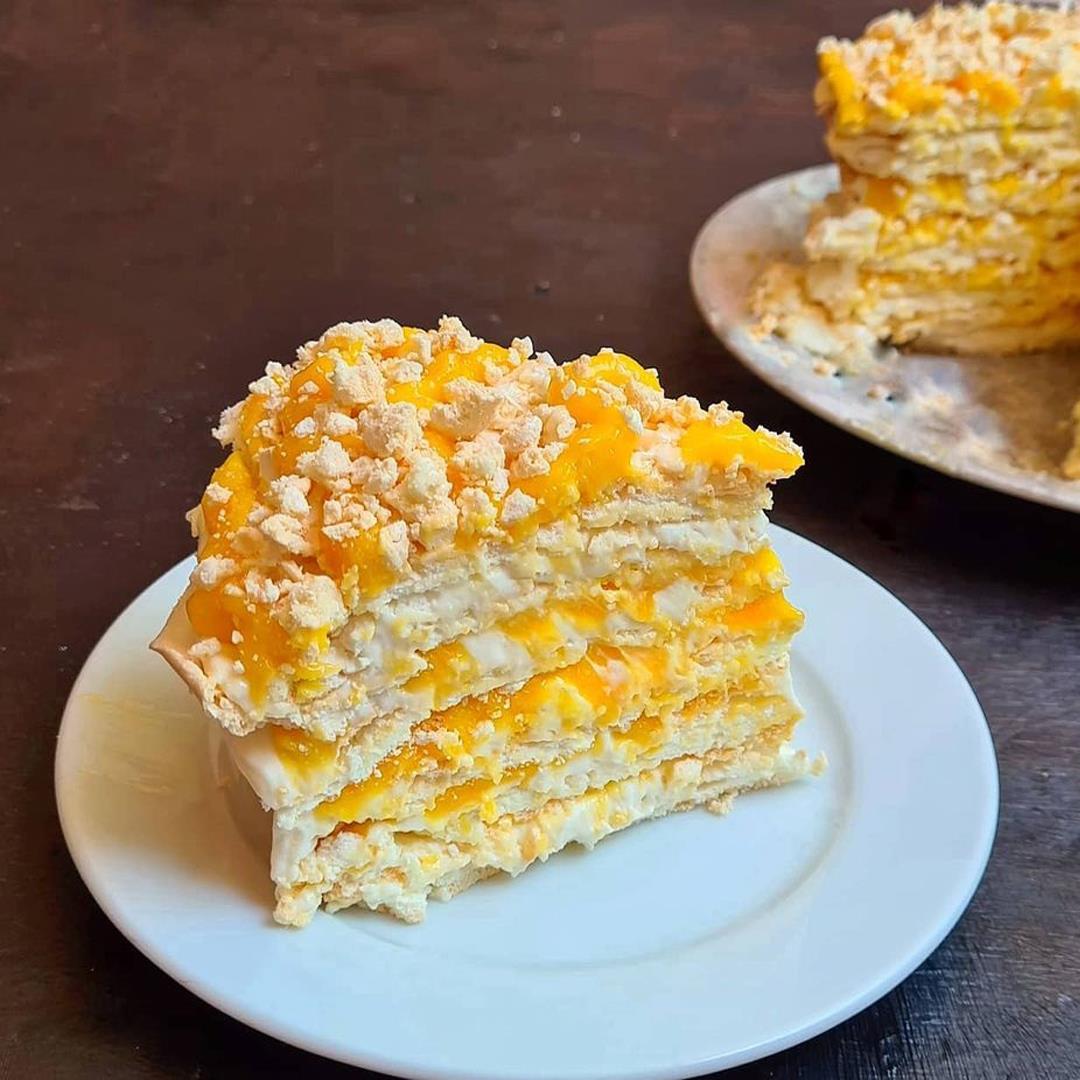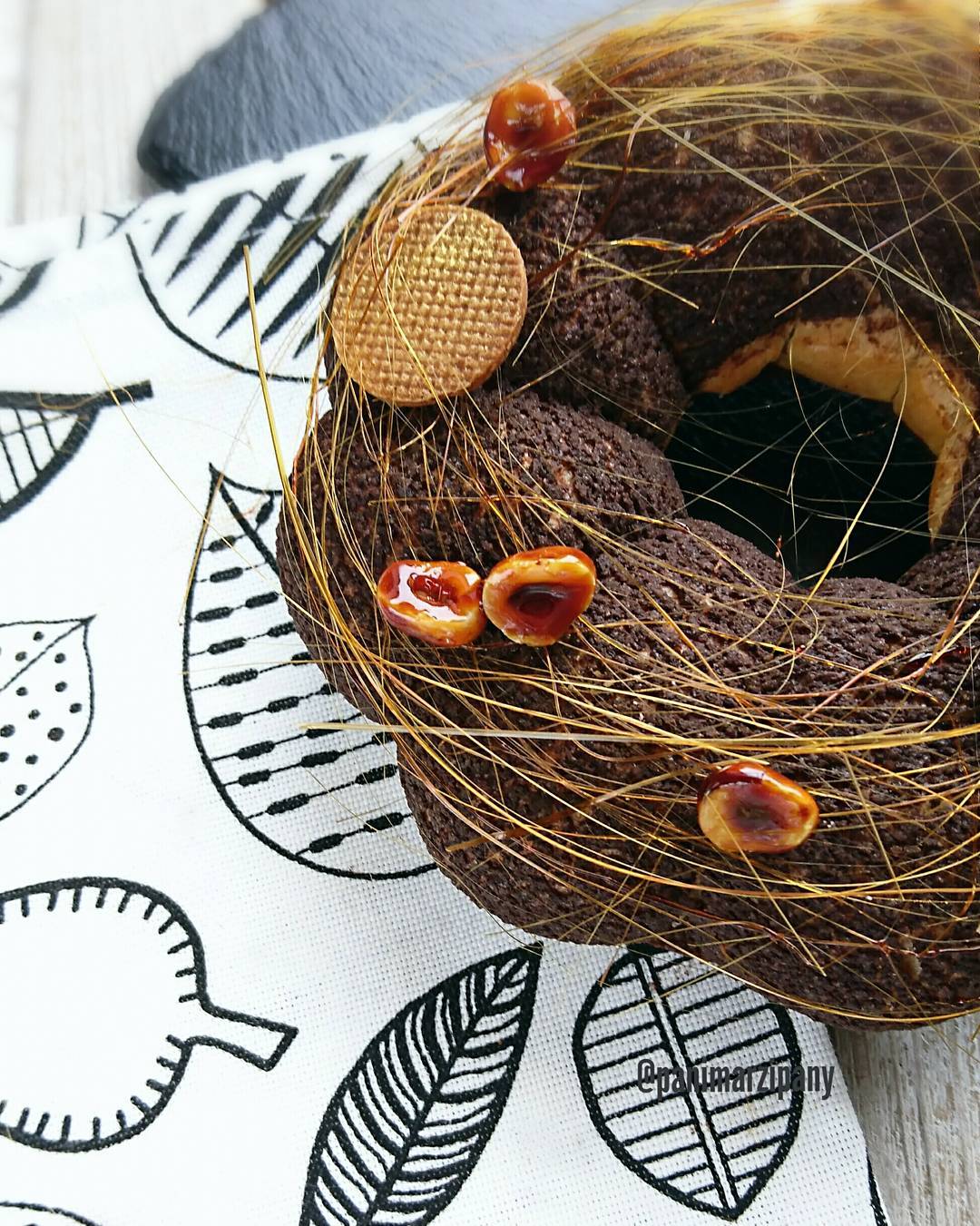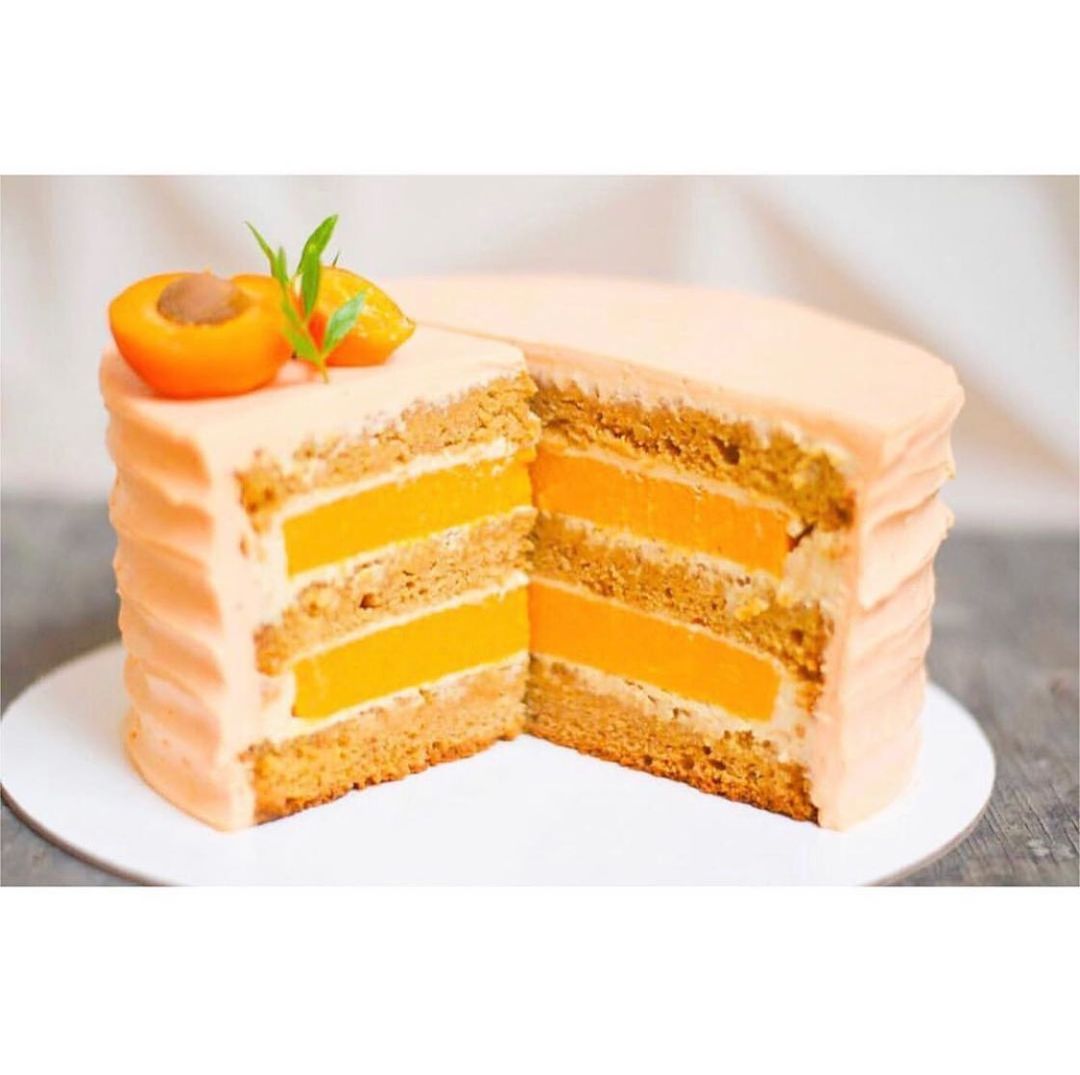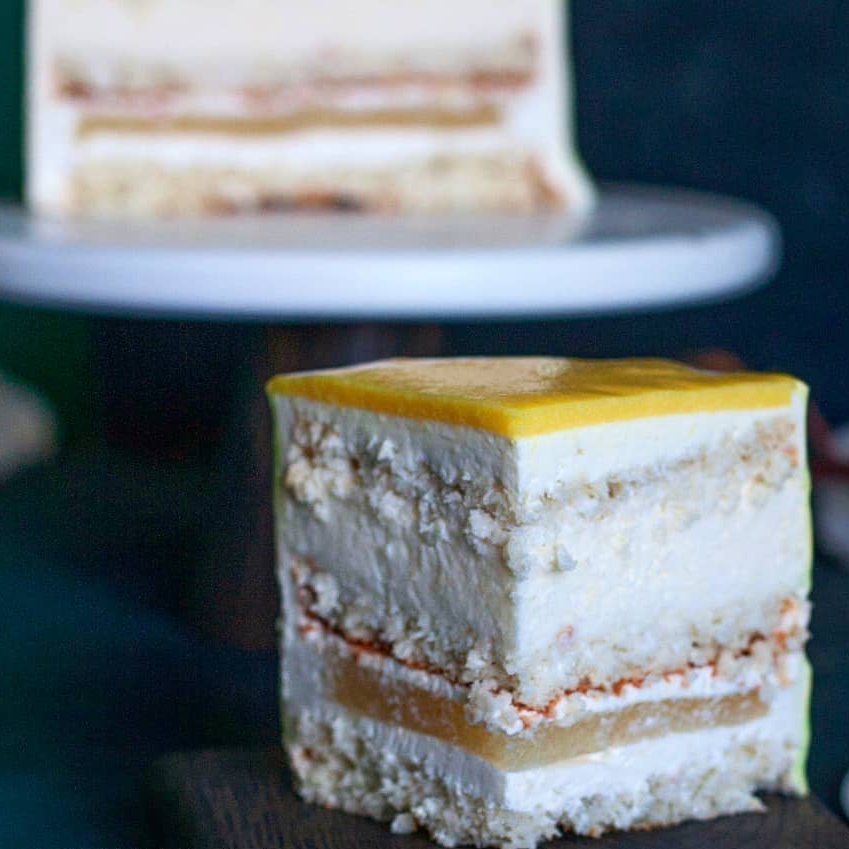Ingredients
Sponge Biscuit
Mousse
Syrup
Instructions
Step 1
Step 2
Step 3
Step 4
Step 5
Step 6
Step 7
Step 8
Step 9
Step 10
Step 11
Step 12
Step 13
Step 14
Step 15
Step 16
Step 17
Step 18
Step 19
Step 20
Step 21
Step 22
Step 23
Step 24
Step 25
Servings
Slice this melon mousse cake and watch the magic unfold. The light and airy sponge pairs wonderfully with the refreshing fruit mousse, making it an absolute delight to your senses.
For an elegant presentation, place each slice on a dessert plate and garnish with fresh mint leaves or a drizzle of honey. The mint adds a burst of color and a refreshing taste that complements the melon perfectly.
If you're serving this at a summer picnic or garden party, pair the cake with a chilled glass of sparkling water infused with citrus slices. The bubbly drink will heighten the cake's lightness and add a festive flair to your gathering.
You can also add a scoop of vanilla ice cream on the side for an extra touch of indulgence. The creamy ice cream and fruity mousse create a delightful contrast that will leave your guests craving more.
Equipment
Ensure you have a variety of sizes for mixing different ingredients efficiently. A sturdy set will make your preparation smooth and hassle-free.
An electric mixer will save you time and effort when whipping eggs and cream to the perfect consistency. Aim for medium speed for optimal results.
A springform pan works best for easy release of your delicate cake. Line it with parchment paper for added security.
Essential for lining your baking mold to prevent sticking and to ensure an easy cleanup.
Use this for neat and even distribution of the mousse layer. It gives your cake a professional touch.
This will help you create uniform melon balls for an elegant decoration. Chill the tool for easier scooping.
Variations
For a gluten-free version, simply substitute the flour with a gluten-free baking mix. Ensure your baking powder is also gluten-free to keep the recipe safe for those with sensitivities.
Veganizing this recipe is also possible! Replace eggs with flaxseed meal (1 tablespoon flaxseed meal + 2.5 tablespoons water per egg), and use coconut cream instead of heavy cream. Make sure to use a plant-based yogurt and agar-agar in place of gelatin. The texture may vary slightly, but the taste will be just as delightful!
Faq
- Why isn't my sponge cake rising properly?
Ensure your eggs are at room temperature and properly whipped for maximum volume. Sifting flour and starch also helps create a lighter batter.
- How can I prevent my mousse from becoming too watery?
Make sure the gelatin is fully dissolved and mixed well into the melon puree. Refrigerating the puree before adding it to the cream helps stabilize the mousse.
- What can I use as a substitute for melon?
Feel free to use other fruits like mango or peach to create a different flavor profile. Just adjust the sweetness as necessary to suit your tastes.
- Can I make this cake in advance?
Absolutely! This cake can be made a day ahead, allowing the mousse to set perfectly. Just keep it refrigerated until you're ready to serve.
- How do I release the cake from the mold without damaging it?
Run a warm knife around the edges before releasing the springform pan. This helps separate the cake cleanly from the sides.
- Why does my mousse have lumps in it?
The lumps usually occur if gelatin isn't fully dissolved. Make sure to dissolve it completely before adding it to the melon puree.

